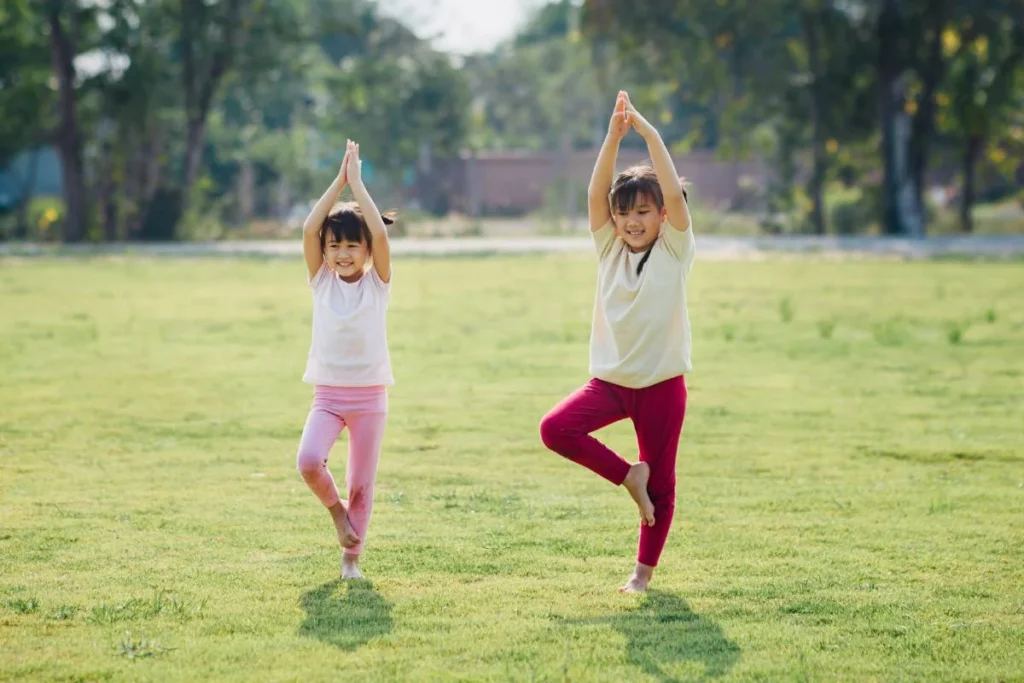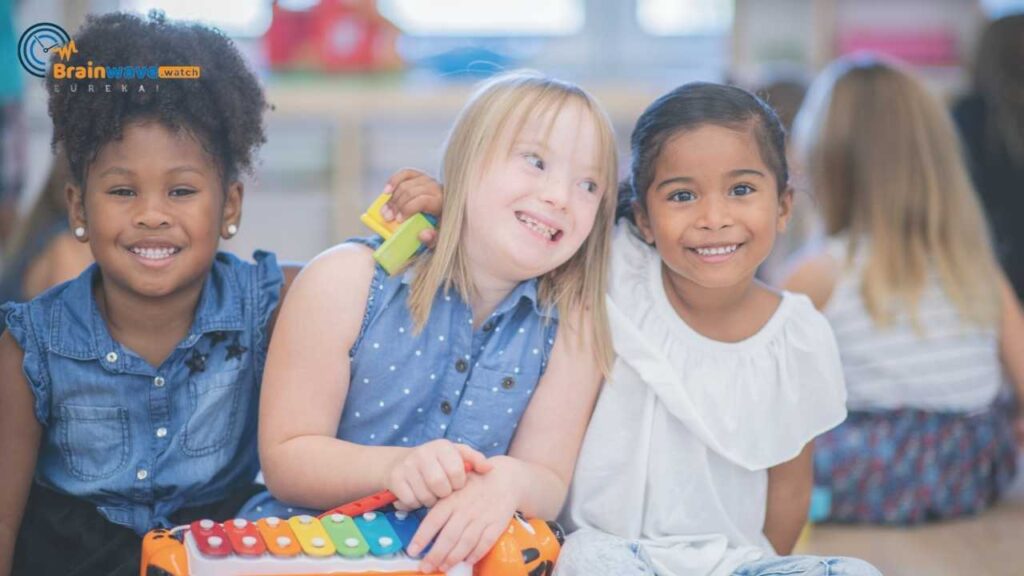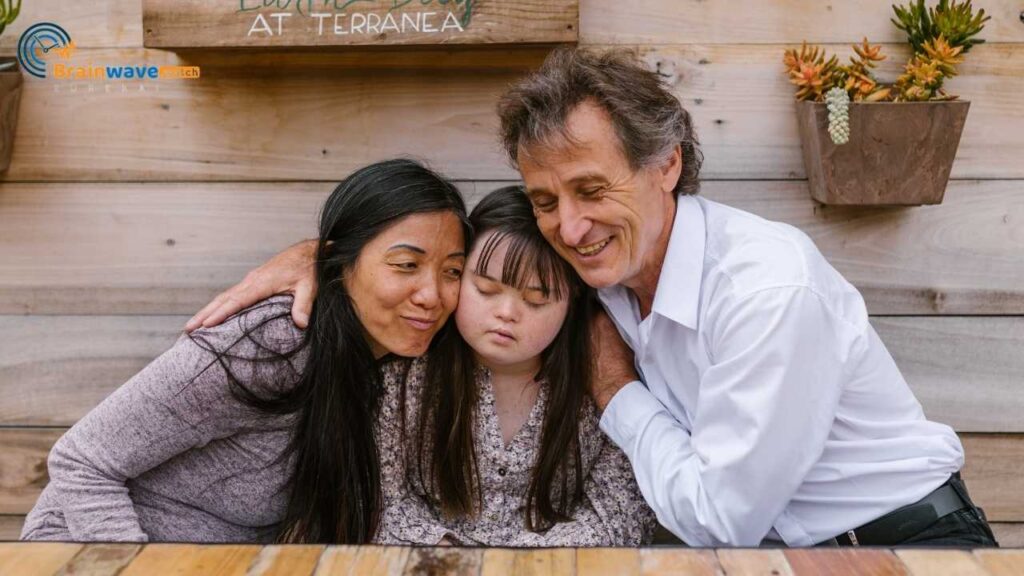Yoga for autistic children is not some kind of mystical, magical practice that can only be understood by a select few. It’s quite simple: yoga for autistic children is just yoga that is adapted to meet the unique needs of children on the autism spectrum.
So, what does that mean exactly? Well, it means that yoga instructors who work with autistic children have to be creative and flexible in their approach. They may need to modify poses, use visual aids, or incorporate sensory activities to make the practice more accessible and engaging for their students.
One of the key benefits of yoga for autistic children is that it can help them develop body awareness and improve their sensory integration. Many children on the autism spectrum struggle with proprioception (the ability to sense where their body is in space) and interoception (the ability to recognize and interpret internal bodily sensations). By practicing yoga, they can learn to tune into their bodies and become more aware of how they move and feel.
Another benefit of yoga for autistic children is that it can help them develop social and communication skills. Many yoga classes for autistic children are taught in a group setting, which provides opportunities for social interaction and cooperation. In addition, yoga can help children learn to regulate their emotions and manage stress and anxiety, leading to improved behavior and communication.
Top Yoga Poses for Kids with Autism
Yoga is a great way to help autistic children build balance, focus, and relaxation skills. Here are two top yoga poses that are perfect for kids with autism:
The Mighty Tree: Building Balance and Focus
The Tree Pose is a great way to help autistic kids build balance and focus. To do the Tree Pose, kids should stand tall and balance on one foot while placing the other foot on their inner thighs. They should then bring their hands together in front of their chest and hold the pose for a few breaths.
This pose is great for kids with autism because it helps them build concentration and focus while also improving their balance and coordination skills. Plus, it’s a fun pose that kids will love!
The Soothing Butterfly: Encouraging Relaxation
The Butterfly Pose is a gentle, soothing pose that encourages relaxation and calmness. To do the Butterfly Pose, kids should sit on the floor with their legs bent and their feet touching each other. They should then gently flap their knees up and down like a butterfly’s wings.
This pose is great for kids with autism because it helps them relax and calm down while also improving their flexibility and range of motion. Plus, it’s a fun and playful pose that kids will enjoy!
Creating an Autism-Friendly Yoga Space
Yoga is about creating a safe and comfortable environment for your body and mind to relax and rejuvenate. When it comes to practicing yoga with autistic children, creating the right atmosphere is even more important. Here are a few tips to help you create an autism-friendly yoga space to make your little yogis feel right at home.
Sensory Delights: The Right Environment
The first step in creating an autism-friendly yoga space is to consider the sensory needs of your little ones. Many autistic children are sensitive to certain sounds, smells, and textures, so it’s important to create a calming and soothing environment. Here are a few things to keep in mind:
- Lighting: Soft, natural lighting is ideal. Harsh fluorescent lights can be overwhelming and distracting.
- Colors: Neutral colors like beige, cream, and light blue can create a calming atmosphere. Avoid bright, bold colors that can be overstimulating.
- Scent: Some children may be sensitive to strong scents, so avoiding using perfumes or essential oils is best. Instead, opt for natural scents like lavender or eucalyptus that can have a calming effect.
- Temperature: Keep the room comfortable, not too hot or too cold.
Props to You: Using Tools and Toys
Props can be a great way to enhance the yoga experience for autistic children. They can help with balance and coordination and provide a tactile experience that can be calming and soothing. Here are a few props to consider:
- Yoga mats: A soft, non-slip yoga mat can provide a comfortable surface for children to practice on.
- Bolsters: Bolsters can be used to support the body in certain poses, providing a sense of security and comfort.
- Blocks: Blocks can be used to modify poses and make them more accessible for children who may have limited mobility or flexibility.
- Sensory toys: Sensory toys like stress balls, fidget spinners, or textured balls can provide a tactile experience that can be calming and soothing.
Creating an autism-friendly yoga space can help your little yogis feel safe, comfortable, and ready to explore the world of yoga. You can create a space that promotes relaxation, mindfulness, and fun with the right environment and props!
Training for Yoga Instructors
So, you want to teach yoga to autistic children? That’s great! But before you start, you need to get some training. After all, you don’t want to be the one responsible for a room full of kids doing downward dogs incorrectly.
But where do you go for training? Who are the Zen masters of yoga for autistic children? Fear not, dear reader, for we have compiled a list of some of the best training programs out there.
Asanas for Autism and Special Needs Teacher Training
First, we have the Asanas for Autism and Special Needs Teacher Training program. This comprehensive program combines years of experience as an educator within the special needs community with extensive knowledge and passion for yoga.
Yoga Journal
Next, we have Yoga Journal, which offers a variety of resources for teaching yoga to children with autism. Their practices are designed to create a deep sense of peace and connection with the earth.
YogaUOnline
YogaUOnline offers a great resource for teaching yoga to autistic children. Their article “Yoga for Children with Autism: A Natural Match” provides valuable insight into the benefits of yoga for children with autism and how to adapt yoga practices to meet their specific needs.
The Yoga Institute
Finally, we have The Yoga Institute, which offers supplemental therapy to give holistic support to children with autism. Asanas help to increase balance, coordination, flexibility, and strength. Pranayama helps in better breathing and calming the senses. Yogic relaxation techniques help children reduce impulsive and obsessive.
Involving Parents in the Practice
Yoga is not just for the child; it’s for the whole family! Involving parents in the practice can help create a supportive environment for the child. Parents can also learn techniques to help their children practice yoga at home.
One way to involve parents is to have them participate in the yoga class with their child. This can help the child feel more comfortable and supported. It can also be a fun bonding experience for the whole family.
Another way to involve parents is to provide them with resources and information about yoga. This can include books, videos, and online resources. Parents can use these resources to learn more about yoga and how it can benefit their children.
It’s important to remember that parents may have different yoga experience levels. Some may be experienced practitioners, while others may be new to the practice. It’s important to provide appropriate resources and support for each family.









